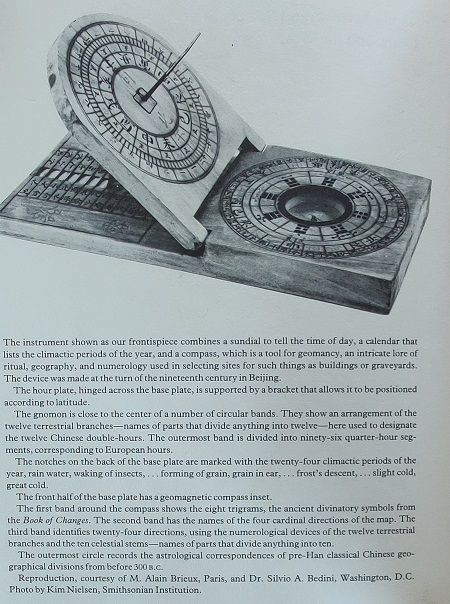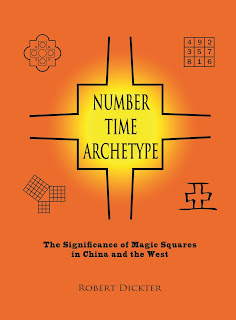This is one of my favorite paintings. Much has been written about this masterpiece by Hans Holbein, one of the greatest artists of the Renaissance era. Rather than rehash what has already been reported by some excellent researchers, the purpose of this post is to bring to light certain aspects that have never been discussed in published form.
The Significance of
the Axis Mundi and the Pole Star
Let us start by examining comments made by Paloma Pajares-Ayuela from her outstanding book Cosmatesque Ornament:
The
center (or axis mundi) symbolizes the
beginning, the origin, the starting point, the pure being, the absolute, the
transcendent; in three dimensions, the center corresponds to the axis, which
unites a point with the zenith (the North Star) indicating verticality.
Next, from the writings of the great Joseph Needham, Science and Civilisation in China, Volume
3, page 230:
The
pole was thus the fundamental basis of Chinese astronomy. It was connected therein with a background of microcosmic-macrocosmic thinking. The
celestial pole corresponded to the position of the emperor on earth, around
whom the vast system of the bureaucratic agrarian state naturally and
spontaneously revolved.
The pole refers to the Pole Star, also known as the North
Star, and is equated with the celestial north pole, which is identified in The Ambassadors painting on the
celestial globe.
The Chinese believed the sun is attached to the heavens and shifts its position between the seasons of winter and summer. The measurements of distances of the pole, and of the motions, are all obtained from the use of the gnomon and the right-angled triangle which it forms. The carpenters’ square was the Chinese symbol for these concepts.
Needham adds:
The
inclination of the polar axis must have been among the earliest of astronomical
observations.
Lastly, from Paul Wheatley, Pivot of the Four Quarters, page 462:
The principle of symbolic centripetality was also clearly manifested in the traditional Chinese city…whose primary concern was with the ordering of society. In the imperial capitals the
symbolism of the center was more strongly developed, for it was at this
quintessentially sacred spot that was raised the royal palace, which
corresponded to the Pole Star. It is explained in the Chou Li how the precise position of the axis mundi was calculated, which is characterized as ‘the place where earth and Heaven meet, where the four seasons merge, where wind and rain are gathered in , and where ying and yang are in harmony.’ A gnomon erected there was held to cast no shadow at the summer solstice. The axis of the world was the point where earth most nearly approached Heaven…The axis mundi was also held to extend below the earth to establish contact with the underworld.
So where is the axis mundi in Holbein’s The Ambassadors? And what would happen if Holbein’s axis mundi is connected with the
celestial north pole, or Pole Star?
The axis mundi can be clearly identified by the pattern on the floor of the painting.
The Pavements of
Westminster Abbey and The Ambassadors, and the Quincunx Symbol
Holbein was the King's painter in England for Henry VII from 1535 until Holbein's death in 1543. He most likely had access to Westminster Abbey and its pavement. In "The Ambassadors”, Holbein uses the quincunx symbolism on the pavement and carpet. The quincunx is a universal geometric symbol that represents the structure of the universe. This
would involve the four cardinal points, the four seasons, the four elements, axial correspondence relating the north
pole of Heaven with earth, the gnomon and its right angle shadow, Pythagorean
math and its tools: the carpenters’ square and compass.
These concepts are also closely related to music according to Pythagorean and Chinese tradition. (In fact, the Chinese words for gong, 工, and for carpenters’ square qu, old style: 曲, are both associated with music and the astronomical instrument, the carpenters’ square.) Equipped with these math tools, humankind could establish an ordering of the cosmos with an amazing accuracy considering the crudeness of their instrumentation utilizing only observation with no magnification.
These concepts are also closely related to music according to Pythagorean and Chinese tradition. (In fact, the Chinese words for gong, 工, and for carpenters’ square qu, old style: 曲, are both associated with music and the astronomical instrument, the carpenters’ square.) Equipped with these math tools, humankind could establish an ordering of the cosmos with an amazing accuracy considering the crudeness of their instrumentation utilizing only observation with no magnification.
All of these concepts are demonstrated in Holbein’s The Ambassadors. A close examination of the carpet will
reveal the quincunx pattern and the swastika.
The swastika or wan, 卍,in Chinese philosophy is a math symbol meaning the ten thousand things and could very likely be based on the Chinese 3x3 magic square (see Needham, ibid, page 58 and 308). The quincunx (the Chinese 3x3 magic square and the swastika) were cosmo-magical symbols that emphasized math and numbers and all the previously mentioned concepts. The quincunx can be
represented as four around one:
Holbein is not only referencing the pavement at Westminster
Abbey (see John North’s The Ambassadors
Secret and the exceptional Patterns
of Thought by Richard Foster), he is also identifying the axis mundi of his masterpiece. Here is Holbein’s The Ambassadors with the vertical axis that connects Heaven with
earth and also the earth’s axis that connects with Jesus being crucified:
The two lines intersect between the lute and the carpenter’s
square (at a 27 degree angle?) with the vertical line from the Pole Star connecting with the underworld via the eyes of the skull. The gentleman’s fingers are
pointing to the earth and a math book, with the carpenter’ square holding the
book open to this page:

The numbers 1,890,000 and 81,648 are related to the number 27 (the triad cubed), a theme persistent throughout Holbein’s masterpiece The Ambassadors. The large numbers relate to the 27x27 magic square with 365 in the middle. Also, an ingenious Pythagorean exercise involves these large numbers. But you will have to purchase my ebook for the answer of this Pythagorean riddle. My book will make the case that the ancient Chinese, the Pythagoreans, and Plato all knew about these magic squares and their relevance.
The book has been identified as a mathematical treatise by
Peter Apianus. The numbers 81648 and 1,890,000 are related to the number 27, a theme persistent thru out Holbein’s masterpiece The Ambassadors. Apianus had written an important book on the mapping of the cosmos in 1524 and was highly praised in Europe as a mathematician and astronomer. In the
book is featured this image of the “nocturnal”:
 This image is from Peter Apianus’ 1524 book and also from
Joseph Needham’s book, Science and
Civilisation in China, Volume 3.
This image is from Peter Apianus’ 1524 book and also from
Joseph Needham’s book, Science and
Civilisation in China, Volume 3.Joseph Needham, Science and Civilisation in China, Volume 3, page 338:
The
nocturnal was a device for telling the time at night by means of the fixed
stars, and consisted of a graduated disc or dial with a hole In the centre, and
a long projecting arm capable of rotations,
The centre being placed in a direct line
between the observer’s eye and the pole-star….
The Circumpolar Constellation Template
According to Needham, the nocturnal had evolved from the circumpolar constellation template, an ancient Chinese disc that was used in conjunction with the sighting tube and would identify the circumpolar rotation of β Ursae minoris.
Wikipiedia: Ursa Minor is notable as the location of the north celestial pole, although this will change after some centuries due to the precession of the equinoxes.
It may be difficult to accept that so many mathematical and cosmological philosophies were
common to the Pythagoreans, the ancient Chinese, and the Renaissance artists,
mathematicians, and astronomers. But there can be no denying the roles of the gnomon and the resultant shadow that follows the suns path, the right-angle triangle theorem, and the carpenters’ square in combination with mathematics sheds illumination for humankind's understanding of the stars, Heaven, and earth. And according to the Chinese Yi Jing, this would include the magic square as well.



























